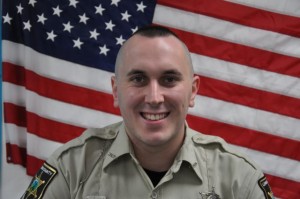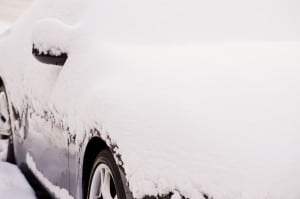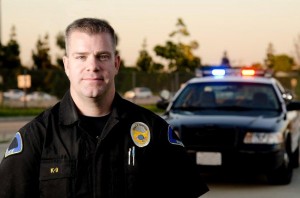by California Casualty | Safety |
Health and safety officials are warning about an unanticipated danger with electronic cigarettes – the danger of fire and burns for those using oxygen. The latest case comes from New York where a hospital patient suffered second and third degree burns to her face when the device she was using ignited the oxygen she was using.
The use of the “vaping” devices has exploded in recent years with several million people getting a nicotine fix from the battery powered e-cigarettes.
The hospital where the latest accident occurred has banned all tobacco use and products, but left e-cigarettes in a gray area; they have since been included, however.
The U.S. Food and Drug Administration is proposing rules and regulations on the currently unregulated product.
There have been several reports of e-cigarette related fires involving many of the name brands across the country. A grandmother recovering from hip surgery in a British hospital was reportedly badly burned while using an e-cigarette while on oxygen.
E-cigarettes utilize a battery powered element that heats up and vaporizes nicotine. Safety officials are now looking to see if that process can ignite oxygen. Other users have reported fires that erupted as they were charging the electronic cigarettes.
by California Casualty | Nominate a Hero |
How to Vote for John
Voting is now Closed! Thanks to all who shared and posted below. Be sure to stay tuned for our upcoming April Finalists.
Be sure to read all our heroes’ stories here.
Capt. John Boesman is a 21 year veteran with the Prince George County Police Department. On March 18, 2013, in the early afternoon Boesman came across a vehicle accident soon after it had occurred. Boesman observed that a mid size SUV was on it’s side. It’s driver trapped, but conscious and the rear of the SUV on fire. The accident reconstruction investigation revealed that SUV driver, the sole occupant had suffer a medical emergency. The driver lost control of the vehicle, striking a curb, which caused the SUV to flip onto its drivers side. The vehicle continued to slide approximately 25 yards down the roadway, damaging the fuel tank. Boesman using his issued service baton was able to break a small hole in the windshield. With the combination of baton strikes, kicking in the windshield and eventually tearing the hole in the windshield with bare hands and, assisted by a good samarian citizen, broke and tore a hole big enough in the front windshield to reach into the cab of the SUV.
While attempting to free the driver who was pinned in the driver’s seat, two back up officers assisted in the rescue attempt. After several minutes of struggling to free with a now unresponsive driver, excessive heat, the vehicle nearly completely engulfed in flames and smoke any further rescue attempt was futile. Boesman suffered second degree burns to his hands and the right side of his face and several lacerations to his hands. Boesman was transported to the hospital for his injuries, admitted and was released from the hospital the following afternoon. Boesman was unable to return to full duty for approximately 3 weeks. In January 2014 Lt. Boesman was promoted to Captain.
by California Casualty | Nominate a Hero |
How to vote for Phil and Austin
Thank you for those who have commented and voted. Voting is now closed. Stay tuned for the announcement of our Hero of the Month for February.
Be sure to read all our heroes’ stories here.
Corporal Phil Arnzen and Deputy Austin Smith are nominated for their bravery, courage, and for going above the call. Both were dispatched to an accident call to where the vehicle had left the road, overturning into a ditch full of water. One of the occupants from the car was pinned under the vehicle, placing them under water, trying to keep their head above it.
Arnzen and Smith then paged for the local volunteer fire department. With no time to wait for the other medical units to arrive, both officers decided to lift the car off the victim, being only option left to save a life. They were able to lift and move the 2,800 pound vehicle, in fact saving the victim’s life. Corporal Arnzen and Deputy Smith were both awarded a Certificate for Valor and Bravery for their actions.


by California Casualty | Safety |

As the southeast continues to clean up from this week’s ice and snow storm, what would you do if you were stuck for hours, or days, in a surprise storm? Drivers in Alabama and Georgia faced the dangerous dilemma this week as a surprise storm moved in, stranding people for over 24 hours. Outdoor survival experts and search and rescue groups have put out these life saving tips.
How to Be Prepared:
1. Always drive with at least three-fourths of a tank of gas during the winter months. In an emergency, you will need as much gas as possible.
2. Pack a fleece blanket, emergency food and a first aid kit in the interior of your car. In an emergency the trunk might not be accessible, and fleece is one of the few pieces of material that retains its ability to provide warmth if it gets wet.
3. Have a container in the car that is capable of holding snow. In an emergency it may be necessary to collect snow in order to hydrate.
4. Replace all the interior light bulbs with LED bulbs. LED bulbs use about one-twelfth of the energy of an incandescent bulb and cost less than a tank of gas. In an emergency, conserving the car battery is extremely important, and the LED bulbs make a big difference.
What to Do If You’re Stranded:
1. Don’t panic and don’t rely on your technology. Survival is never about technology and always about temperament. In many cases cell phones and GPS devices may have been disabled by the accident or will not have service. However, if they are functional, they should be used immediately.
2. Always stay in your vehicle. If people are coming to look for you there is a better chance they will see a car than a person. You will also be able to survive for longer in your vehicle than in the elements. There are only two circumstances in which you should leave the vehicle. The first is if you are familiar with the surroundings and are certain it would be easy to walk to safety. The second is an option of last resort in which you believe you have absolutely no chance of surviving unless you try to walk to safety.
3. Keep your seat belt on. In winter conditions it is likely that other drivers may slide into your vehicle after it has become stuck.
4. Crack the back window slightly. Oftentimes the tail pipe is obstructed by snow, which can cause deadly carbon monoxide fumes to get into the vehicle when the engine is running.
5. Run the engine for 10 to 15 minutes every hour. This will allow you to heat the car, melt snow into water and even warm a meal if you have packs of survival food. It will also conserve gas and prolong the life of both the engine and the battery. In an emergency, the vehicle is your lifeboat, and you want it to be functional for as long as possible.
Read more lifesaving winter tips by visiting here.
The Associated Press contributed to this report.
by California Casualty | Safety |

There are many dangers associated with being a law enforcement officer. Many come simply from driving. The police have to protect the public but also protect themselves by not taking risks while in or around their vehicle. Here is a roundup of eight ways for police officers to keep safe on the job.
1. Don’t drive tired: It’s been proven that driving fatigued can be as bad as driving drunk. You’re especially at risk if you work overnight; the darkness can make anyone want to doze. Recognize the warning signs and know when you need to take a break: eyes closing or going out of focus, persistent yawning, irritability and wandering thoughts, among others.
2. Wear a seatbelt: This should go without saying, but it doesn’t. Not only is it a good example for the public, it is a no-brainer for keeping officers safe on the roadways. Sadly, almost half of officers killed in vehicle accidents were not wearing a seatbelt.
3. Use GPS: 911 dispatchers can use GPS to see where officers’ vehicles are at all times. Not only does it allow for the monitoring of safe driving habits, a live map shows the dispatcher which officer is nearest to the scene of an emergency. GPS speeds up the decision-making process, saving what can be critical moments, and the operator can send an officer who can get to the incident the soonest. As always, be sure officers are trained on any new technology in the vehicle, such as GPS-enabled laptops.
4. Avoid multitasking: Police officers today are outfitted with all kinds of equipment in their vehicles, including cameras and computers. Use extreme caution if you have to use this technology while behind the wheel. Eating, drinking or having a conversation while driving can be distracting, too. If it’s not an emergency situation, stop the car and do what you need to do.
5. Wear a reflective vest: Increasing your visibility is a simple but crucial step to take when you exit your vehicle to enter the roadway or stand on the shoulder. If the situation allows, pick these locations wisely — try not to pull over on a blind curve, where other drivers have little or no chance to see you in time to slow down.
6. Keep tires maintained: The vehicle should have a light that warns the driver when tire pressure is low, but it doesn’t hurt to check it once in a while, especially when the temperature drops significantly at the beginning of winter. Check tire treads using the “penny test”: place an upside-down penny in one of the treads. If you can see the top of Lincoln’s head, your treads are wearing down and the tire should be replaced.
7. Don’t speed unless necessary: Speed can kill. The faster a car is moving, the less time the driver has to react to any obstacle. Making sudden maneuvers at high speeds leads to accidents.
8. Call for backup: If you have a feeling that backup is needed, ask for it. Don’t worry about inconveniencing other officers. You are better safe than sorry if you suspect that someone has a gun or that you will be in a threatening situation.
Author Bio:
Cheryl Bikowski is Marketing Communications Supervisor of Gamber-Johnson in Stevens Point, WI. Gamber-Johnson is a leading supplier of vehicle computer mounts and vehicle docking stations and is a member of the Leggett & Platt Commercial Vehicle Products (CVP) Group.




